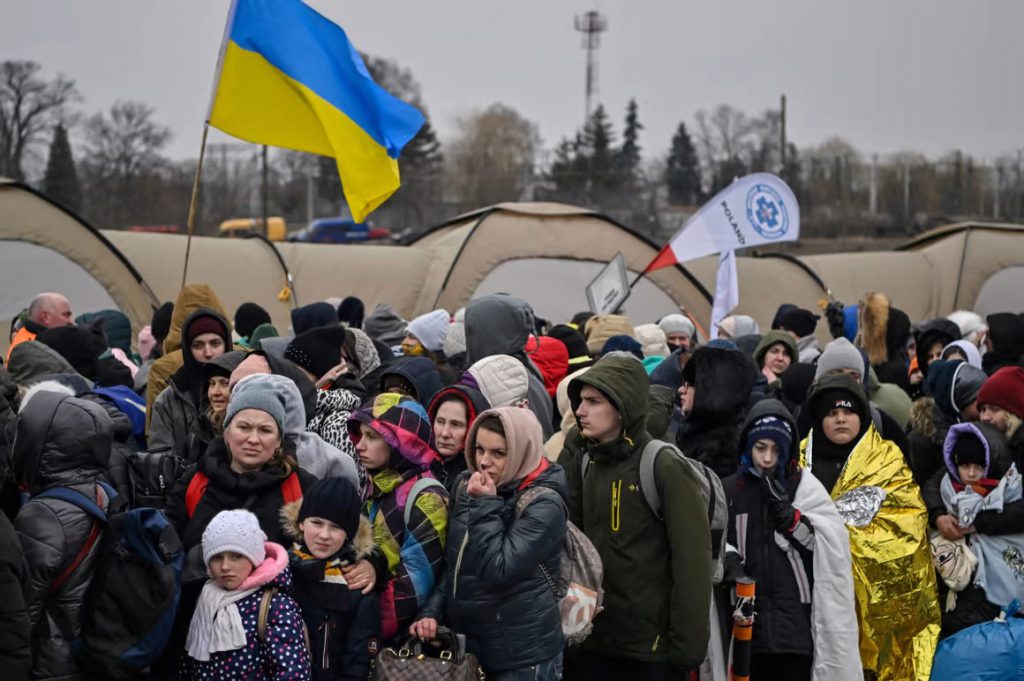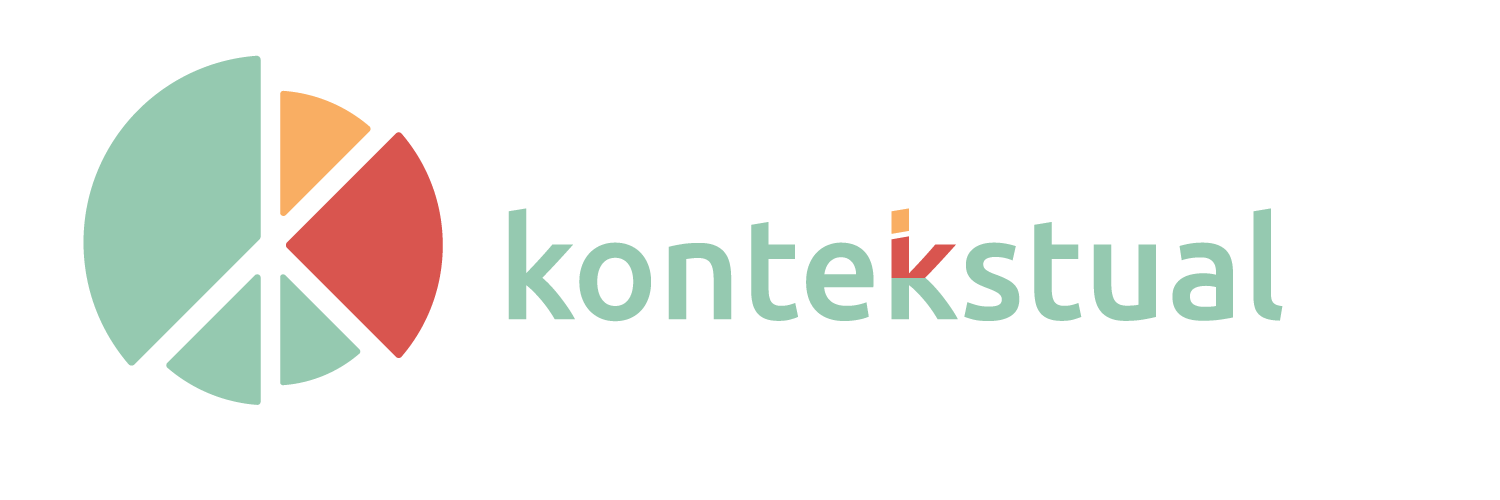Poland’s Double Standard Response on Ukraine and Belarus-Poland Border Refugee Crisis

Illustration of Ukrainian refugees. Photo: Getty Images
Introduction
It is undeniable that the attack carried out by Russia on Ukraine in early 2022 had various significant impacts. The escalation of the conflict has many impacts, such as infrastructure damage, deaths, and the emergence of refugee issues (UNHCR, 2022). The war conditions that threaten the lives of civilians in Ukraine ultimately encourage Ukrainian to move or migrate to areas that are considered safer. As of April 11, 2022, there are 4,615,830 Ukrainians has been fleeing to various regions (UNHCR, 2022). Poland is one of few countries that have a direct border with Ukraine. That condition pushed the Poland Government to establish an open-door policy that allows Ukrainians refugees to enter Polish territory easily (Sieradzka, 2022). However, the Polish policy eventually caused controversy because at the same period of time, Poland implemented a policy that prohibited refugees on the Belarus-Polish border from entering its territory. In this regard, this article will attempt to answer the question of “Why Poland Creates Double Standard Response Regarding the Ukraine Refugee Crisis and Poland-Belarus Refugee Crisis? In order to answer that question, the author will use conventional constructivism theory which views that the policies carried out by a country are influenced by the social construction and affected by the actor identity.
Theoretical Framework: Conventional Constructivism
Constructivism theory is one of the theories of international relations that became popular in the 1990s, because it is seen as an alternative theory that is able to explain the end of the Cold War and the dynamics of international relations after the Cold War era. Wendt (1995) reveals that constructivism theory is part of a critical theory that emerged to answer questions that are not the focus of other International Relations (IR) theories. It was also revealed that in contrast to existing IR theories such as realism, liberalism, and neo-neos theories which view the fundamental structure of international politics as something that has been formed from the start or given. Meanwhile constructivism theory and other critical theories view that the international political system is social and formed on the influence of the interaction of interests and identities of IR actors. Constructivists also assume that the interests of the state are often constructed by the existing structural system. In contrast to neo-realist theory which views that the structure is only formed by material capabilities, constructivists believe that the existing structure is also shaped by social relations based on three elements, namely shared knowledge, material resources, and practices (Wendt, 1995).
As one of the social theories, constructivism theory is also developing and divided into two types of constructivism, namely conventional constructivism and critical constructivism. Conventional constructivism is basically present to provide an alternative view of the pre-existing IR theory (Hopf, 1998). In this type, the structure is understood as a barrier that cannot be changed and will affect the behavior of the state. Conventional constructivists also believe that the understanding of anarchy by each country will be different because the understanding of each country will be based on intersubjective understanding and practice. Therefore, multiple understandings regarding the conditions of anarchy are possible. On the other hand, critical constructivism has a slightly different perspective from conventional constructivism. Conventional constructivism tends to accept the concept of identity and wants to understand the effects of that identity, while critical constructivism tends to focus on understanding the true origin of an identity (Hopf, 1998). Thus, this paper will use conventional constructivism variants to understand the influence of the identity of refugees on immigration policy in Poland.
Poland Immigrant Policy Regarding Ukrainian Refugees
There are several policies issued by Poland in dealing with the refugee crisis due to the conflict between Ukraine and Russia. In mid-March 2022, the Polish government issued a policy that supports the Polish government’s assistance to Ukrainian refugees. The policy stipulates that every Ukrainian citizen forced to migrate and settle in Poland as a result of the war will legally obtain the right to stay in Poland for 18 months (European Union, 2022). In addition, the Polish Government also provides financial assistance to Ukrainian refugees for 60 days. This new regulation also provides several supports that will have a significant impact on refugee groups (European Union, 2022). First, the regulation gives Ukrainian refugee groups the right to access the Polish labor market even though they do not have work permits. Second, children from refugee groups have the right to come and participate in school programs conducted by the Polish community. Third, refugee groups will also receive some social assistance, such as family care support.
It should be understood that the advantages described above will be obtained when a person already has a Polish National Identification Number (PESEL). On the first day of the opening of the PESEL manufacturing service, on March 16, 2022, 31 thousand PESEL were approved by the Polish government (Ministry of the Interior and Administration Poland, 2022). Thus, it can be seen that the Polish government has prepared everything needed to openly and optimally support the presence of the Ukrainian people. Deputy Prime Minister and Minister of Culture of Poland, Piotr Gliński revealed that this openness of acceptance is basically supported by the long history of Ukrainian and Polish cooperation towards migrant workers (Karnitschnig, 2022). There were as many as 1.5 million Ukrainians who were working and living in Poland even before the Russian-Ukrainian conflict escalated. Furthermore, Sobolewska (Erdal, 2022) also reveals that the ties and links between Poland and Ukraine since the royal era have also been the driving force for the formation of a policy of accepting Ukrainian refugees by Poland.
Poland’s Response on Poland-Belarus Refugee Crisis
The Ukrainian refugee crisis is basically not the first time a European country has faced a refugee crisis. One of several other refugee-related crises that countries in Europe have or are currently facing is the issue of refugees on the border between Poland and Belarus. The refugee crisis is actually indirectly driven by the imposition of sanctions by the European Union on Belarus (Thornell, 2021). It explained that the Belarusian government used refugee conditions to push for the lifting of the sanctions imposed. Although President Lukashenko denies that Belarus invites or advises refugees to come and use Belarusian borders to enter continental Europe, BBC News (2021) proves that there is a change in migration policy in Belarus which is becoming easier to prove the role of the Government of Belarus in supporting refugee migration to the region. Europe indirectly. One example of Belarus’ policies that support the move is the issuance of a visa-free decision for one month for 76 countries in the world.
As a country that directly borders Belarus, the increase in migration that wants to enter the European continent through the border area will have a significant impact on Poland. Therefore, the Polish government then issued a new policy regarding migration and refugees who want to enter its territory. However, in contrast to the response given to Ukrainian refugees which was received positively, Poland ultimately issued a policy prohibiting refugees from entering the borders of Belarus and Poland. In October 2021, the Polish parliament passed a policy allowing border guards to deport or push back refugees who still try to enter Poland (Huemer, 2021). This is certainly not in accordance with the refugee policy proclaimed by the European Union. On the other hand, Belarus also continues to force refugees to continue their actions to enter the Polish border legally or illegally (Tondo, 2021). These conditions ultimately led to groups of refugees having to be trapped and building small tents on the Polish-Belarus border area to survive.
Poland’s Double Standard Response
In line with the conventional constructive assumption which views that identity is inherent and influences the dynamics of existing interactions, if further understood, the double standard regarding Poland’s attitude in dealing with the issue of Ukrainian refugees and refugees on the Belarus-Poland border is actually closely related to the identity that exists. owned by refugees. According to Frontex (2021 in BBC News) data, most of the refugees residing in the Polish-Belarus border region are refugees from the Middle East and come from countries with a Muslim majority community. In this regard, there is a negative stigma spread among Polish society regarding Muslim identity. Poles often view Islam as a religion that is always identified with violence and terrorism (Dudzińska and Kotnarowski, 2019). This then prompted the Polish government’s reluctance to accept refugees on the Polish-Belarus border. The sentiment towards Muslim groups was also exacerbated by the victory of the Law and Justice Party (PiS) in Poland in 2015. PiS is a right-wing party that views that the presence of Muslim immigrants or refugees in Poland will endanger the Catholic identity and national security of Poland (Chakraborty, 2021). PiS and other far-right Polish parties believe that assimilation between Islamic and Catholic culture is difficult and even likely impossible.
Conclusion
It can be concluded that according to the conventional constructivism, the cause of the double standard response carried out by Poland in overcoming the issue of the Ukrainian refugee crisis and the refugee crisis in the Polish-Belarus border region was influenced by the social construction formulated by the Polish government and the identity carried by the refugees. The long history that binds Poland and Ukraine in the government and public sectors has ultimately led to the creation of a policy of accepting Ukrainian refugees. The Polish government views that the acceptance of the refugees is a form of mutual solidarity between the two parties. In addition, supported by the proximity of the region, Poland also views that there are similarities in identity between the Ukrainian and Polish people. These conditions eventually prompted a positive reaction to the Ukrainian refugee crisis. On the other hand, refugees experienced a different response on the Belarus-Polish border. Poland, which constructs the refugee crisis at the border into a national threat, is actually driven by the inherent identity of the refugees. Coming from a Muslim-majority country in Middle East and the stigma of the link between Muslims and terrorism movements ultimately led to Poland’s reluctance to accept refugees in Belarus-Poland border.
References:
BBC News, (2021. November 26). Belarus Border Crisis: How Are Migrants Getting There? BBC News. https://www.bbc.com/news/59233244.
Chakraborty, Tuhin. (2021, February 20). The Rise of Islamophobia in Poland. E-International Relations. https://www.e-ir.info/2021/02/20/opinion-the-rise-of-islamophobia-in-poland/.
Dudzińska, Agnieszka dan Kotnarowski, Michal. (2019, July 24). Imaginary Muslims: How the Polish Right Frames Islam. Brookings. https://www.brookings.edu/research/imaginary-muslims-how-polands-populists-frame-islam/.
Erdal, Marta B. (2022, March 4). Why Does Poland Welcome Ukrainian Refugees but Not Others?. Sciencenorway.co. https://sciencenorway.no/opinion-refugees-researchers-zone/why-does-poland-welcome-ukrainian-refugees-but-not-others/1991637.
European Union, (2022, March 18). Poland: Parliament Adopts Law on Assistance to Ukrainian Refugees. https://ec.europa.eu/migrant-integration/news/poland-parliament-adopts-law-assistance-ukrainian-refugees_en
Hopf, Ted. (1998). The Promise of Constructivism in International Relations Theory. International Security, 23(1).
Huemer, Sarah. (2021, October 15). Polish Parliament Approves Law for Migrant Pushbacks at Belarus Border. POLITICO. https://www.politico.eu/article/polish-parliament-approved-law-for-migrant-pushbacks-at-the-border/.
Karnitschnig, Matthew. (2002, March 28). Poland ready to take more Ukrainians, deputy PM says. POLITICO. https://www.politico.eu/article/poland-ready-to-take-more-ukrainians-deputy-pm-says/.
Ministry of the Interior and Administration Poland, (2022, March 16). The Process of Assigning PESEL Numbers to War Refugees from Ukraine Has Started. Gov.pl. https://www.gov.pl/web/mswia-en/the-process-of-assigning-pesel-numbers-to-war-refugees-from-ukraine-has-started.
Sieradzka, Monika. (2022, March 20). Poland’s Open-Door Policy Helps Ukrainian Refugees Build New Lives. DW. https://www.dw.com/en/polands-open-door-policy-helps-ukrainian-refugees-build-new-lives/a-61192590.
Thornell, Christina. (2021, December 7). Why the Belarus Migrant Crisis is Different. Vox. https://www.vox.com/videos/22822426/belarus-lukashenko-eu-migrant-crisis-poland.
Tondo, Lorenzo. (2022, February 2022). In Limbo: The Refugees Left on the Belarusian-Polish Border – A Photo Essay. The Guardian.org. https://www.theguardian.com/global-development/2022/feb/08/in-limbo-refugees-left-on-belarusian-polish-border-eu-frontier-photo-essay.
UNHCR, (2022). Operational Data Portal: Ukraine Refugee Situation. https://data2.unhcr.org/en/situations/ukraine.
Wendt, Alexander. (1995). Constructing International Politics. International Security, 20(1).
Akbar Yudha Susila is an International Relations student at Universitas Airlangga. He can be found on Instagram with the username @akbaryudha_








